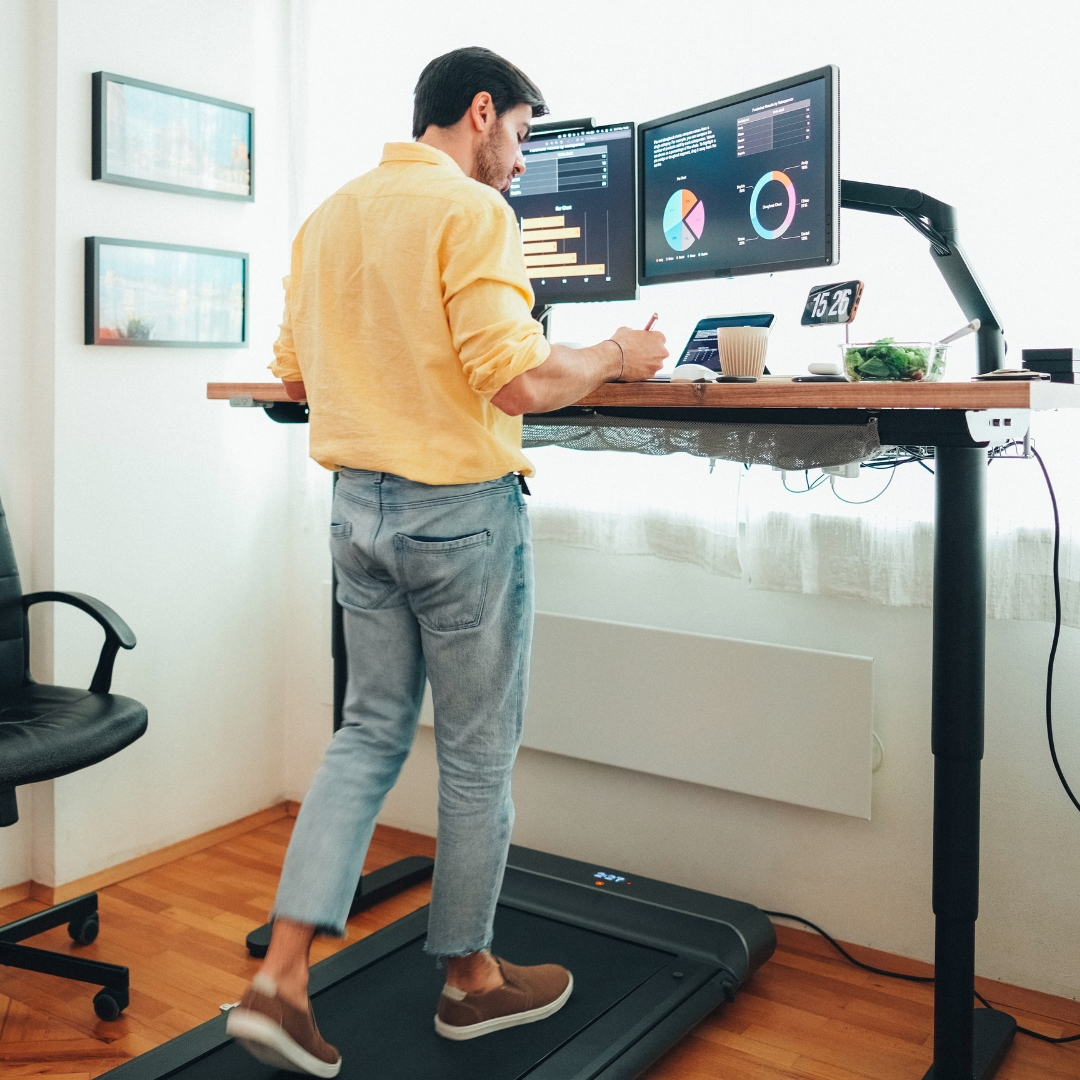
Simple ways to mix up your movement in May
1 May 2024
Luke Denham
Clinic Lead Practitioner
Sports Therapist
Over the last few weeks, we have met many patients struggling with a variety of injuries, but we have particularly been helping people with their backs. Could this be due to a change in the weather affecting their activity levels, and the sort of things that they spend their time doing? I bet you are asking; “How on earth could the weather cause injuries and discomfort”?
Now, I don’t mean that the sun coming out means your back is going to hurt more, but we do see a change in activity levels when there is a change in season. And an increase in frequency and type of movement, (and conversely, a decrease in our movement) can lead to painful problems. Movement is so important for our wellbeing, but we also need to move ‘well’, and be strong.
The importance of movement
Movement is a core element of our wellbeing. If you look back through history, we were always moving. In fact, two hundred years ago 90% of the world lived in an agricultural environment, and people sat for only three-five hours a day. In the modern world, people sit for 13-15 hours a day. We are not built to sit at a desk or drive long distances.
Movement affects our whole makeup, from good circulation, sleeping patterns, weight management, good digestion, physical strength, our heart, lungs and a positive mindset. As physiotherapists, osteopaths, and sports therapists, we don’t just want to encourage you to move more, but instead to mix up your movement to reduce sedentary or overuse-related pain. We wish to encourage you to do this to help improve the health of your joints and soft tissues and prevent injury through repetitive strain.
What happens when you don’t move enough?
Lack of movement will affect us in many ways, but our spine is where we will feel it most. Your spine is a beautifully complex engineering masterpiece, which needs to be able to move easily so you can go about your life with comfort and strength. It is literally at the centre of all movement, so when the spine becomes restricted through sitting at a desk for long periods or driving a car, it can lead to problems not only with the back itself but other joints in the body too. Inactivity can cause restrictions in the movement of the spine; therefore, it is important to move in a variety of different ways to offset the stickiness that is created by our day-to-day lives.
Your spine is made up of an astonishing 364 joints, nearly one for every day of the year, supported by many ligaments, 40 muscles and their attachments, and 25 intervertebral discs that create a flexible ‘S-shaped’ shock-absorbing system enabling movement across all planes. Now think of all the other joints in our body, there is a lot to think about and we need to keep moving. Little and often is the key to tackling inactivity. Having a simple but effective routine, that moves multiple joints, and is easy to do wherever you are, can be a great way of keeping on top of any aches, stiffness and pains that stem from a lack of movement.
Can too much movement and activity also cause pain?
Absolutely, we have discussed the effects of inactivity and the impact a lack of movement can have on the body. Another thing to consider is how much is too much? Repetitive strain and ‘overuse’ injuries make up a big portion of what we see in clinic. This can be caused by periods of inactivity followed by lots of the same movements. For example, a quiet and cosy winter period of book reading and movie watching, swiftly replaced by long evenings and weekends getting the garden ready for summer. We tend to find that we are busier in the summer, both with our social calendars and general activities. Therefore, we must be aware of how over-working structures (from repetitive movement or using them in a way they are not used to), can cause damage leading to pain.
A simple way to combat this is to vary the workload and movements you do, but also to move everything more regularly so that this change does not come as such a shock to the system. If we implement regular movement, stretch routines and consistent exercise, our bodies will naturally adapt more easily to varied loads, helping to prevent against ‘overuse’ type injuries.
Simple things to do throughout your day to help you keep mobile
- Set a reminder to get up and move through a mobility sequence every 30-40 minutes throughout your day – especially if you lead a more sedentary lifestyle or are in a heavy manual lifting job.
- Plan your weekly exercise routine, perhaps introducing yoga or Pilates for mobility and regular walks with the dog for a change of scenery.
- Plan to take a walk at lunchtime or use a coffee break to stretch out those tight structures.
- Have more than one workstation – perhaps a standing desk, a seated desk and even a comfy sofa occasionally.
- Plan you day to cover a variety of jobs and activities, where possible, rather than doing the same movement all day long.
- Take every phone call standing up, use a headset, and pace whilst talking.
- Have meetings or networking so you can walk and talk with colleagues.
- Take the stairs rather than the lift in the office.
- If you are struggling with neck stiffness, try to work on some neck mobility exercises every time an email arrives. Or if you are on the road, do these at the traffic lights.
- If your eyes are sore, get your eyes tested, assuming all is OK, why not make sure you move phone calls outside to vary the view?
These simple ideas explained
If you spend a lot of time seated at a desk or in the car, your spine will not regularly bend, extend, or rotate. Your musculature will not be involved in active movement – leading to weakness, stiffness, and a lack of flexibility. We see patients with seated jobs experiencing low-grade but annoying stiff and grumbly pain types, and these can be easily helped with a regular movement routine. In-fact, we are moving away from the term ‘perfect posture’ as sitting in ANY one position for too long will lead to irritation and pain. Instead, we advocate regular movement and stretching, and encourage regular breaks from the desk to help alleviate stiffness and get you going.
There is also a contrast to this. As discussed earlier, overuse and repetitive movements can also lead to irritation, weakness, and pain. Even though you might be more active at work, it is important to remember to use your whole body – try and distribute the load and stretch structures that might be under lots of tension. For example, we see lots of manual labourers with overuse injuries at the elbows and shoulders, but also lots of stiffness in their lower backs, stemming from spending a great deal of time leaned over or loading in a certain position. The message is the same – keep moving and this will help combat the pain you see from your everyday activities.
We can help
If you spend a lot of time sitting still or doing repetitive movements and would like some help and advice on how to better manage your day, or you are keen to resolve the niggles with your back, neck or shoulders, please contact us to see how we can help.

